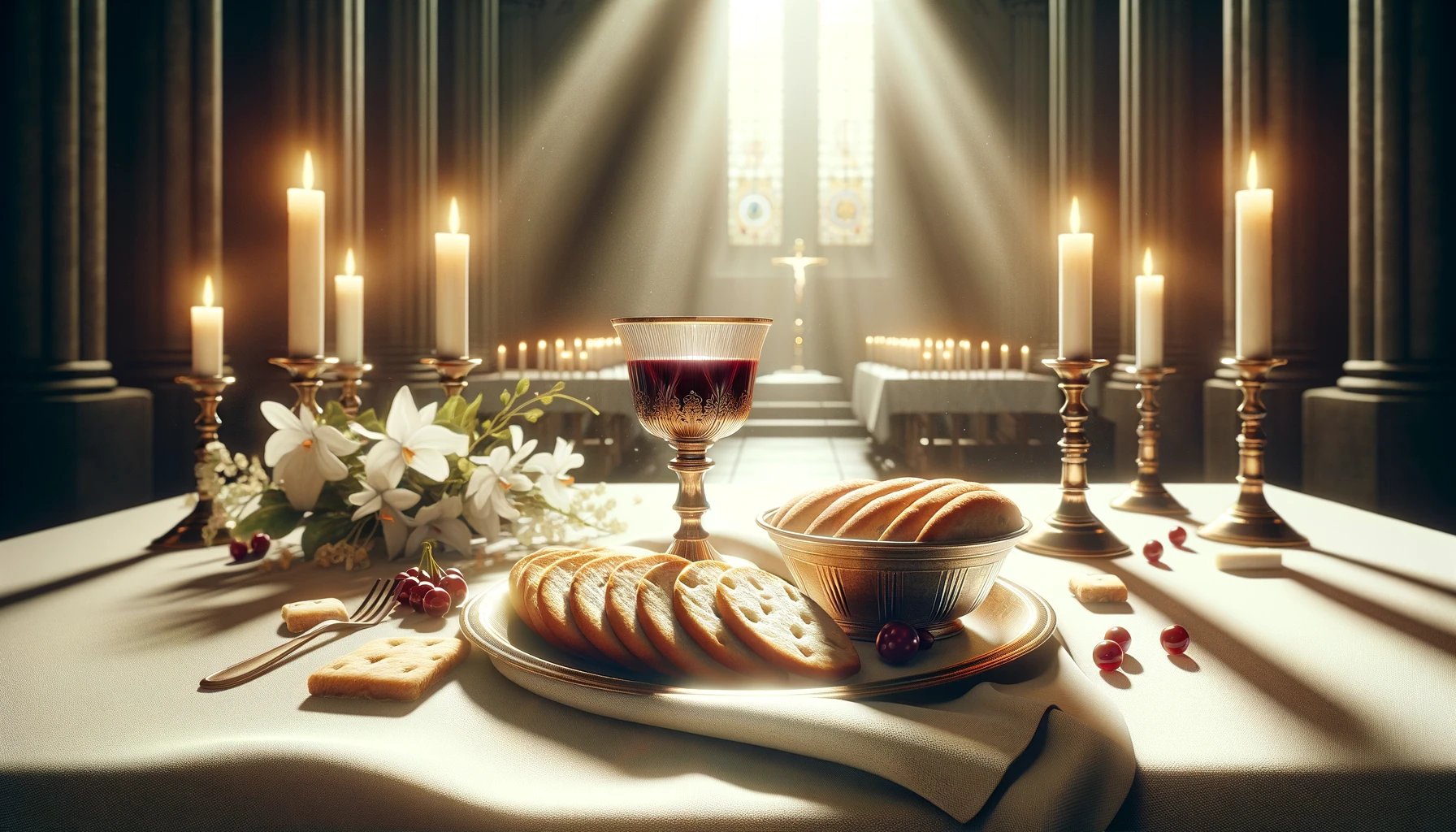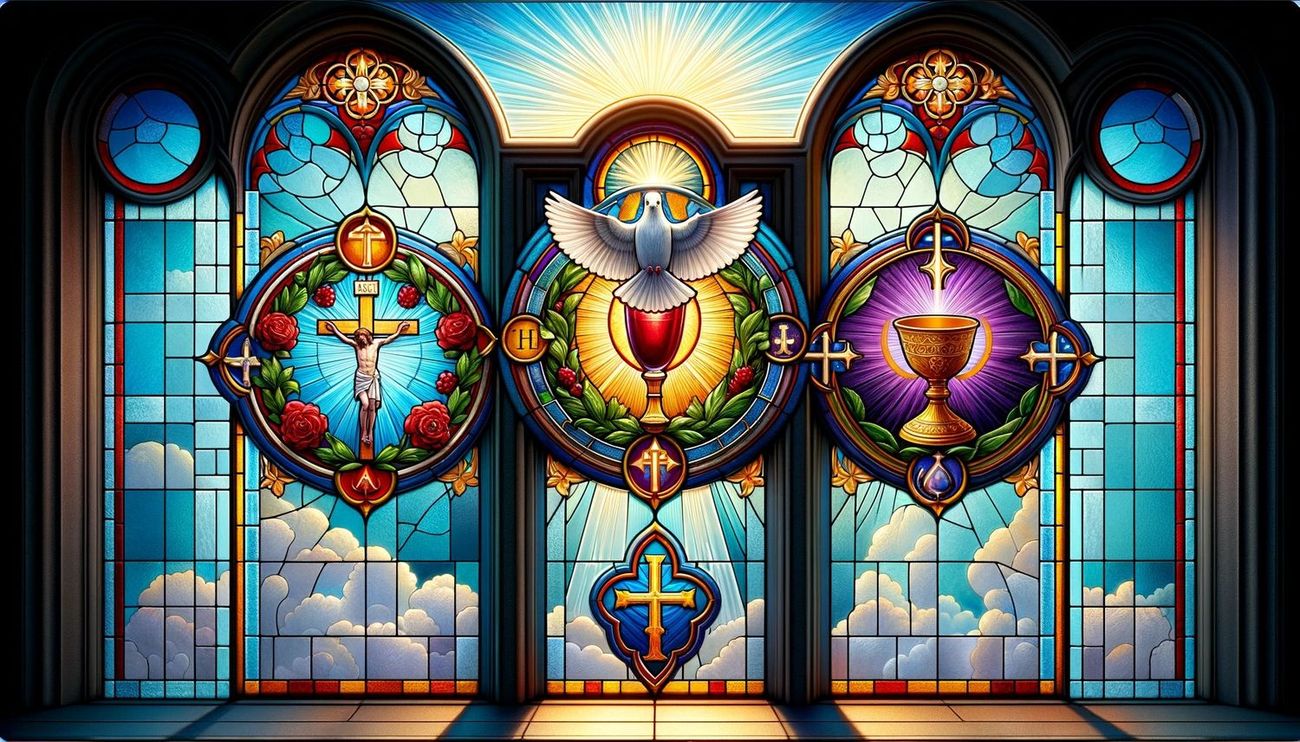Home>Arts and Culture>What Does A Cathedral Represent


Arts and Culture
What Does A Cathedral Represent
Published: February 15, 2024
Ericka Andersen, an editor at Christian.net, expertly merges digital strategy with content creation, focusing on faith and societal issues. Her communication skills enhance the platform's engaging narratives, fostering meaningful dialogue on belief's impact on society.
Discover the symbolic significance of cathedrals and their role in arts and culture. Explore the rich history and meaning behind these architectural marvels.
(Many of the links in this article redirect to a specific reviewed product. Your purchase of these products through affiliate links helps to generate commission for Christian.net, at no extra cost. Learn more)
Table of Contents
Introduction
Cathedrals stand as majestic testaments to human creativity, faith, and architectural prowess. These awe-inspiring structures have captivated the hearts and minds of people for centuries, serving as more than just physical edifices. They embody a rich tapestry of history, spirituality, and cultural significance that transcends time and place.
From the towering spires that seem to touch the heavens to the intricate stained glass windows that bathe the interiors in a kaleidoscope of colors, cathedrals are more than mere buildings; they are living, breathing entities that tell stories of bygone eras and enduring beliefs. As visitors step through their hallowed doors, they are enveloped in an atmosphere that exudes reverence, wonder, and a profound sense of connection to something greater than themselves.
Cathedrals are not just relics of the past; they are living monuments that continue to inspire and unite communities across the globe. Whether it's the grandeur of Notre-Dame in Paris, the intricate carvings of the Sagrada Familia in Barcelona, or the serene beauty of St. Patrick's Cathedral in New York City, each cathedral holds a unique allure that beckons people to explore their depths and contemplate the mysteries they hold within their walls.
In the following sections, we will delve into the historical significance of cathedrals, exploring their architectural symbolism, spiritual and religious importance, and their role as cultural and community centers. Through this exploration, we will uncover the multifaceted nature of these extraordinary structures and gain a deeper appreciation for the profound impact they have had on societies throughout history.
Read more: What Does A Baptism Represent
Historical Significance of Cathedrals
Cathedrals hold a profound historical significance, serving as enduring testaments to the ingenuity and craftsmanship of the societies that built them. Dating back to the medieval period, these monumental structures were not only centers of religious devotion but also symbols of civic pride and architectural innovation. The construction of cathedrals often spanned decades, if not centuries, and their evolution reflects the shifting cultural, political, and artistic landscapes of the eras in which they were built.
During the Middle Ages, cathedrals were not only places of worship but also hubs of intellectual and artistic activity. The intricate carvings, sculptures, and stained glass windows adorning these edifices served as visual narratives, depicting biblical stories, historical events, and moral lessons for the largely illiterate populace. These architectural marvels also functioned as centers of learning, where scholars and theologians gathered to exchange ideas and advance knowledge in fields ranging from theology to astronomy.
Moreover, cathedrals played a pivotal role in the development of architectural techniques and engineering prowess. The soaring vaulted ceilings, flying buttresses, and intricate stone carvings showcased the mastery of medieval craftsmen and the ambitious vision of their patrons. The construction of these colossal structures required meticulous planning, skilled labor, and unwavering dedication, often spanning generations. As a result, cathedrals became enduring symbols of communal effort and collective aspiration, reflecting the unity and resilience of the societies that brought them to life.
Furthermore, the historical significance of cathedrals extends beyond their construction and artistic embellishments. These monumental edifices bore witness to pivotal historical events, serving as silent witnesses to wars, political upheavals, and societal transformations. From coronations and royal weddings to periods of strife and reconciliation, cathedrals stood as steadfast guardians of collective memory, preserving the narratives of the past within their hallowed walls.
In essence, the historical significance of cathedrals transcends their religious function, encompassing their roles as centers of art, learning, and communal identity. These architectural marvels continue to stand as living chronicles of human history, inviting visitors to immerse themselves in the rich tapestry of the past and contemplate the enduring legacy of those who envisioned and built these awe-inspiring structures.
Architectural Symbolism
Cathedrals are not merely architectural marvels; they are profound repositories of symbolic meaning, each element meticulously crafted to convey spiritual, philosophical, and cultural significance. Every facet of a cathedral's design, from its soaring spires to its intricate carvings, is imbued with layers of symbolism that invite contemplation and reflection.
The towering spires of cathedrals, reaching skyward with ethereal grace, symbolize the aspiration of the human spirit to transcend earthly concerns and connect with the divine. These lofty structures, often crowned with crosses or other religious symbols, serve as tangible expressions of the yearning for spiritual elevation and the quest for transcendence. As visitors gaze upon these spires, they are reminded of the enduring human desire to reach beyond the material realm and seek communion with the sacred.
The intricate stained glass windows that adorn cathedrals are not merely decorative elements; they are vibrant canvases that convey profound theological narratives and spiritual truths. Through the interplay of light and color, these windows illuminate the interiors with a kaleidoscope of hues, evoking a sense of divine radiance and heavenly splendor. Each panel of stained glass serves as a visual allegory, depicting biblical stories, saints, and sacred symbols that speak to the faithful and inspire awe in the hearts of all who behold them.
The labyrinthine floor plans of cathedrals, with their intricate network of aisles, chapels, and transepts, symbolize the complexity and mystery of the divine order. As visitors navigate these labyrinthine spaces, they are invited to embark on a symbolic journey of spiritual discovery, mirroring the twists and turns of the human soul's quest for enlightenment and salvation. The architectural layout of cathedrals thus becomes a tangible expression of the profound spiritual odyssey that lies at the heart of religious devotion.
Moreover, the ornate sculptures and carvings that adorn cathedrals are not mere embellishments; they are intricate repositories of symbolic meaning. From the intricate foliage motifs that symbolize the abundance of divine grace to the sculpted figures of saints and martyrs that embody the virtues of faith and sacrifice, every carving serves as a visual parable, conveying timeless truths and moral lessons to those who contemplate them.
In essence, the architectural symbolism of cathedrals transcends mere aesthetic beauty, inviting visitors to embark on a profound journey of contemplation and spiritual reflection. Each element of these extraordinary structures serves as a testament to the enduring power of symbolism to convey the deepest truths of the human experience and the ineffable mysteries of the divine.
Spiritual and Religious Importance
The spiritual and religious importance of cathedrals transcends their physical presence, encompassing their profound significance as sacred spaces that inspire devotion, contemplation, and communal worship. From the moment one crosses the threshold of a cathedral, a palpable sense of reverence and awe envelops the visitor, inviting them to embark on a spiritual journey that transcends the boundaries of time and space.
Cathedrals serve as sanctuaries of solace and spiritual renewal, offering respite from the tumult of daily life and providing a sacred haven for introspection and prayer. The hallowed interiors, adorned with flickering candlelight, resonant hymns, and the fragrance of incense, create an atmosphere that fosters a deep sense of connection to the divine and a profound awareness of the transcendent mysteries that lie beyond the material world.
Moreover, cathedrals play a pivotal role in the communal expression of faith, serving as gathering places where believers congregate to partake in sacred rituals, celebrate religious festivals, and seek solace in times of joy and sorrow. The collective act of worship within the sacred confines of a cathedral fosters a sense of unity and shared purpose, reinforcing the bonds of community and providing a tangible expression of the enduring vitality of religious traditions.
Furthermore, cathedrals stand as tangible embodiments of the enduring legacy of religious devotion, preserving the accumulated prayers, aspirations, and spiritual yearnings of countless generations within their hallowed walls. As repositories of sacred art, relics, and religious artifacts, these extraordinary structures serve as living testaments to the enduring power of faith and the timeless quest for transcendence that unites humanity across cultures and epochs.
In essence, the spiritual and religious importance of cathedrals lies in their ability to transcend the temporal and the mundane, offering visitors a glimpse of the eternal and the divine. These sacred spaces continue to inspire awe, reverence, and spiritual contemplation, serving as beacons of hope and faith in an ever-changing world. As such, cathedrals stand as enduring symbols of the enduring human quest for meaning, transcendence, and spiritual fulfillment.
Cultural and Community Center
Cathedrals transcend their religious significance to become vibrant cultural and community centers that foster a sense of collective identity and belonging. These awe-inspiring structures serve as more than places of worship; they are dynamic hubs of artistic expression, historical preservation, and communal engagement. As cultural landmarks, cathedrals attract visitors from diverse backgrounds, inviting them to immerse themselves in the rich tapestry of human creativity and heritage.
One of the defining features of cathedrals as cultural and community centers is their role as custodians of artistic masterpieces. From the exquisite sculptures adorning their facades to the resplendent works of stained glass within, cathedrals house a treasure trove of artistic achievements that span centuries. These masterpieces not only showcase the evolution of artistic styles and techniques but also provide a tangible link to the cultural heritage of the communities in which they stand. Visitors are afforded the opportunity to marvel at the intricate craftsmanship of medieval artisans, contemplate the profound symbolism infused in every detail, and gain a deeper appreciation for the artistic legacy that continues to inspire and captivate audiences.
Furthermore, cathedrals serve as venues for cultural events, musical performances, and educational programs that enrich the lives of local communities and visitors alike. Concerts featuring choral music or classical compositions often take place within the sacred confines of cathedrals, harnessing the acoustics and grandeur of these spaces to create transcendent musical experiences. Additionally, educational initiatives, guided tours, and exhibitions offer insights into the historical, artistic, and architectural significance of cathedrals, fostering a deeper understanding of their cultural resonance and historical importance.
Moreover, cathedrals function as gathering places for community celebrations, civic ceremonies, and charitable endeavors. From hosting civic ceremonies and commemorations to providing spaces for charitable outreach and community engagement, cathedrals play a vital role in fostering a sense of unity and shared purpose within their communities. These monumental structures serve as beacons of hope, compassion, and solidarity, embodying the enduring spirit of communal cooperation and mutual support.
In essence, cathedrals stand as vibrant cultural and community centers that transcend their religious function, offering a wealth of artistic, educational, and communal experiences. As living embodiments of human creativity and collective endeavor, cathedrals continue to inspire, unite, and enrich the lives of all who cross their thresholds, ensuring that their cultural and communal significance endures for generations to come.
Read more: What Does A Communion Wafer Represent
Conclusion
In conclusion, cathedrals represent far more than architectural marvels or religious edifices; they embody the collective aspirations, spiritual yearnings, and cultural heritage of humanity. From their historical significance as testaments to human ingenuity and communal endeavor to their profound architectural symbolism that invites contemplation and reflection, cathedrals stand as timeless monuments that transcend the boundaries of time and place.
The spiritual and religious importance of cathedrals extends beyond their function as places of worship, encompassing their role as sanctuaries of solace, communal expressions of faith, and repositories of sacred traditions. These sacred spaces continue to inspire awe, reverence, and spiritual contemplation, serving as beacons of hope and faith in an ever-changing world.
Furthermore, cathedrals serve as vibrant cultural and community centers that foster a sense of collective identity and belonging. As custodians of artistic masterpieces, venues for cultural events, and gathering places for community celebrations, cathedrals enrich the lives of local communities and visitors alike, ensuring that their cultural and communal significance endures for generations to come.
In essence, cathedrals stand as living testaments to the enduring power of human creativity, faith, and communal cooperation. As visitors traverse their hallowed halls, they are invited to embark on a profound journey of discovery, contemplation, and spiritual renewal, gaining a deeper appreciation for the profound impact these extraordinary structures have had on societies throughout history.
As we marvel at the grandeur of cathedrals, we are reminded of the enduring human quest for meaning, transcendence, and spiritual fulfillment. These awe-inspiring structures continue to beckon us to explore their depths, contemplate the mysteries they hold within their walls, and discover the timeless truths they convey. In doing so, we embrace the enduring legacy of cathedrals as living embodiments of human creativity, faith, and cultural heritage, ensuring that their profound significance resonates for generations to come.














